Advertisements
Chapters
1.02: The Growth of Nationalism
1.03: The American Civil War
1.04: India in the Eighteenth Century
1.05: Traders to Rulers (I)
1.06: Traders to Rulers (II)
1.07: Impact of British Rule on India
1.08: The Great Uprising of 1857
1.09: Great Reformers and Reform Movements
1.1: Struggle for Freedom (I)
▶ 1.11: Struggle for Freedom (II)
2.1: The Union Legislature
2.2: The Union Executive
2.3: The Judiciary
2.4: The United Nations
![Goyal Brothers Prakashan solutions for Focus on History and Civics [English] Class 8 chapter 1.11 - Struggle for Freedom (II) Goyal Brothers Prakashan solutions for Focus on History and Civics [English] Class 8 chapter 1.11 - Struggle for Freedom (II) - Shaalaa.com](/images/9789352561254-focus-on-history-and-civics-english-class-8_6:3e66627b1b3a4364ba885fbf91d26441.jpg)
Advertisements
Solutions for Chapter 1.11: Struggle for Freedom (II)
Below listed, you can find solutions for Chapter 1.11 of CISCE Goyal Brothers Prakashan for Focus on History and Civics [English] Class 8.
Goyal Brothers Prakashan solutions for Focus on History and Civics [English] Class 8 1.11 Struggle for Freedom (II) Fill in the blanks 1
Fill in the blanks:
The Swaraj Party was led by ____ and ____.
Fill in the blanks:
All India Trade Union Congress was founded by ____ in ________.
Fill in the blank:
The Quit India Movement took place in the year ____.
Fill in the blank:
Congress Socialist Party was formed in _______.
Fill in the blank:
The chairman of the Simon Commission was ____.
Fill in the blank:
The Congress session of March 1940 was presided over by _______.
Fill in the blank:
Subhash Chandra Bose formed the ___ in 1939.
Fill in the blank:
“Delhi Chalo” and “Jal Hind” were two slogans given to us by _______
Fill in the blank:
Lord Mountbatten came to India in 1947 as ______.
Goyal Brothers Prakashan solutions for Focus on History and Civics [English] Class 8 1.11 Struggle for Freedom (II) Match the following 1
Match the contents of Column A and Column B:
| Column A | Column B |
| 1. Lord Mountbatten | a. Jawaharlal Nehru |
| 2. 'Do or Die' | b. Subhash Chandra Bose |
| 3. Revolt of Royal Indian Navy | c. Mahatma Gandhi |
| 4. Subhash Chandra Bose resigned from Congress presidentship | d. Viceroy |
| 5. Quit India Movement | e. 1942 |
| 6. Azad Hind Fauj | f. 1939 |
| 7. Interim government | g. 1946 |
Goyal Brothers Prakashan solutions for Focus on History and Civics [English] Class 8 1.11 Struggle for Freedom (II) True or False 1
State whether the following statement is True or False:
The Charkha was a symbol of progress.
True
False
State whether the following statement is True or False:
The Congress participated in the first Round Table Conference.
True
False
State whether the following statement is True or False:
The Congress swept the polls in 8 provinces in the 1937 elections.
True
False
State whether the following statement is True or False:
Sir Stafford Cripps was an American officer sent to India.
True
False
State whether the following statement is True or False:
Netaji started the Quit India movement.
True
False
State whether the following statement is True or False:
It was because of British presence in India that the country was made a target for Japanese attack.
True
False
State whether the following statement is True or False:
Netaji was the commander of the Indian National Army.
True
False
State whether the following statement is True or False:
In 1956, the British government announced its decision to quit India.
True
False
Goyal Brothers Prakashan solutions for Focus on History and Civics [English] Class 8 1.11 Struggle for Freedom (II) Answer the following questions
Answer the following question:
Discuss the main aspects of the Non-Cooperation Movement.
Answer the following question:
How and when did the Civil Disobedience Movement start? How did the government suppress it?
Answer the following question briefly:
With reference to the Quit India Movement, answer the following:
Why did Congress pass the Quit India Resolution? How did the government react to it?
Answer the following question:
Discuss the main features of the Government of India Act, 1935.
Answer the following question:
Why did India accept the partition proposal even though it did not accept the two-nation theory?
Answer the following question:
Discuss the contribution of INA in the freedom struggle.
Answer the following question:
Discuss the main clauses of the Indian Independence Act of 1947.
Goyal Brothers Prakashan solutions for Focus on History and Civics [English] Class 8 1.11 Struggle for Freedom (II) Picture study 1
Look at the picture given below and answer the following question.
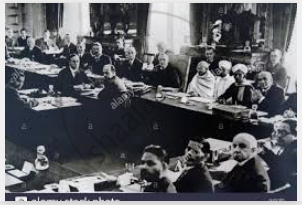
Which conference is in progress?
Look at the picture given below and answer the following question.

When and where was this conference held?
Look at the picture given below and answer the following question.

Who were the main participants in this conference?
Look at the picture given below and answer the following question.

What was the result of this conference?
Goyal Brothers Prakashan solutions for Focus on History and Civics [English] Class 8 1.11 Struggle for Freedom (II) Fill in the blanks 2
Fill in the blank:
Gandhi spent about 22 years in _____________ as a practicing lawyer.
Fill in the blank:
Under __________ leadership, the Indian national movement was transformed into a mass movement
Fill in the blanks:
To protest against the arrest of their leaders, a public meeting was held at ___________ in Amritsar in the year _______.
Fill in the blank:
After the British brutalities in Amritsar, Gandhiji declared that it would be a sin to co-operate with the __________ government.
Fill in the blanks:
At the _________ session of the Congress in 1929, ____________ was declared as its goal.
Goyal Brothers Prakashan solutions for Focus on History and Civics [English] Class 8 1.11 Struggle for Freedom (II) Match the following 2
Match the Following:
| A | B |
| 1 Gandhiji | (a) Symbol of swadeshi |
| 2 Charkha | (b) Boycott of British goods |
| 3 Jallianwala Bagh | (c) Salt Satyagraha |
| 4 Dandi March | (d) 13 April 1919 |
| 5 Non-Cooperation Movement | (e) Truth and non-violence |
Goyal Brothers Prakashan solutions for Focus on History and Civics [English] Class 8 1.11 Struggle for Freedom (II) Choose the correct answer
Choose the correct answer:
Gandhiji studied law in __________.
England
South Africa
France
Choose the correct answer:
Gandhiji organized a workers strike against the exploitative Indian mill owners in ___________.
Ahmedabad
Kheda
Champaran
Choose the correct answer:
The Non-Cooperation Movement was launched by Gandhiji in ___________.
1920
1930
1940
Choose the correct answer:
A resolution declaring ‘Poorns Swaraj was declared as its goal at the _____________ session of the Congress
Lahore
Surat
Bombay
Choose the correct answer:
The _____________ was started with the Salt Satyagraha in 1930.
The Non-Cooperation Movement
Civil Disobedience Movement
Quit India Movement
Goyal Brothers Prakashan solutions for Focus on History and Civics [English] Class 8 1.11 Struggle for Freedom (II) True or false 2
State whether the following is true or false:
Gandhiji did not have faith in the capacity of the common masses.
True
False
State whether the following is true or false:
In 1919, General Dyer had issued an order banning all public meetings.
True
False
State whether the following is true or false:
The Non-Cooperation Movement had ended in failure after the Chauri Chaura incident
True
False
State whether the following is true or false:
Independence Day was celebrated on 26 January in 1930.
True
False
State whether the following is true or false:
Sarojini Naidu was one of the leaders of the Civil disobedience Movement.
True
False
Goyal Brothers Prakashan solutions for Focus on History and Civics [English] Class 8 1.11 Struggle for Freedom (II) Answer the following questions in one or two words/ sentences
What technique of resistance did Gandhiji evolve in South Africa? What was its basic principle?
Why did Gandhiji lead campaigns in Champaran?
Why did Gandhiji lead campaigns in Kheda?
Which incident marked the end of the Non-Cooperation Movement and when?
Under whose leadership was the Lahore session of the Congress held in 1929? What resolution was passed in this session?
Goyal Brothers Prakashan solutions for Focus on History and Civics [English] Class 8 1.11 Struggle for Freedom (II) Answer the following questions briefly
With reference to Gandhiji, discuss his views on the following issue:
Truth and non-violence.
Answer the following question briefly
With reference to Gandhiji, discuss his views on the following issues: Hindu-Muslim unity
Answer the following question briefly
With reference to Gandhiji, discuss his views on the following issues: Social justice
Answer the following question briefly
In the context of the Jallianwala Bagh tragedy, answer the following:
Why was a public meeting held in Jallianwala Bagh on 13 April 1919?
Answer the following question briefly
In the context of the Jallianwala Bagh tragedy, answer the following:
Why did the troops open fire on the gathering? What happened as a result of the shooting?
Answer the following question briefly
In the context of the Jallianwala Bagh tragedy, answer the following:
How did the entire nation and Gandhiji react to the events in Amritsar?
Answer the following question briefly
In the context of the Non-Cooperation Movement, answer the following questions:
Discuss the programme of the Non-Cooperation Movement.
Answer the following question briefly
In the context of the Non-Cooperation Movement, answer the following questions:
Why did Gandhiji abruptly suspend the Non-Cooperation Movement?
Answer the following question briefly
In the context of the Non-Cooperation Movement, answer the following questions:
State the significance of the Non-Cooperation Movement.
Answer the following question briefly
In the context of the Civil Disobedience Movement, answer the following:
Give an account of the Salt Satyagraha.
Answer the following question briefly
In the context of the Civil Disobedience Movement, answer the following:
How did the government react to the movement?
In the context of the Civil Disobedience Movement, answer the following:
What impact did the Civil Disobedience Movement (1930-34) have on the nation?
Goyal Brothers Prakashan solutions for Focus on History and Civics [English] Class 8 1.11 Struggle for Freedom (II) Picture study 2
This is the picture of an Indian leader who was known as the ‘Father of the Nation’,
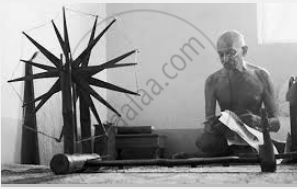
Identify the person.
This is the picture of an Indian leader who was known as the ‘Father of the Nation’,
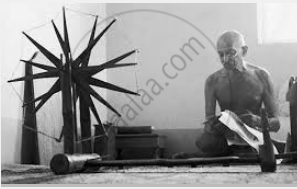
What method did Mahatma Gandhi use in the Indian struggle for freedom?
This is the picture of an Indian leader who was known as the ‘Father of the Nation’,
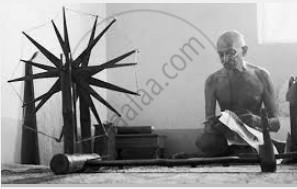
What are the principles on which Mahatma Gandhi's method is based?
This is the picture of an Indian leader who was known as the ‘Father of the Nation’,
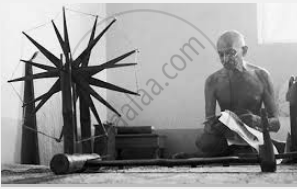
Why is Mahatma Gandhi called the leader of the masses?
This is the picture of an Indian leader who was known as the ‘Father of the Nation’,
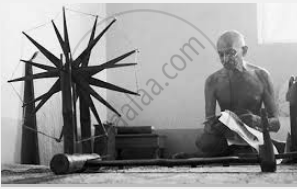
Mention the features of his non-violent struggle against the British.
Solutions for 1.11: Struggle for Freedom (II)
![Goyal Brothers Prakashan solutions for Focus on History and Civics [English] Class 8 chapter 1.11 - Struggle for Freedom (II) Goyal Brothers Prakashan solutions for Focus on History and Civics [English] Class 8 chapter 1.11 - Struggle for Freedom (II) - Shaalaa.com](/images/9789352561254-focus-on-history-and-civics-english-class-8_6:3e66627b1b3a4364ba885fbf91d26441.jpg)
Goyal Brothers Prakashan solutions for Focus on History and Civics [English] Class 8 chapter 1.11 - Struggle for Freedom (II)
Shaalaa.com has the CISCE Mathematics Focus on History and Civics [English] Class 8 CISCE solutions in a manner that help students grasp basic concepts better and faster. The detailed, step-by-step solutions will help you understand the concepts better and clarify any confusion. Goyal Brothers Prakashan solutions for Mathematics Focus on History and Civics [English] Class 8 CISCE 1.11 (Struggle for Freedom (II)) include all questions with answers and detailed explanations. This will clear students' doubts about questions and improve their application skills while preparing for board exams.
Further, we at Shaalaa.com provide such solutions so students can prepare for written exams. Goyal Brothers Prakashan textbook solutions can be a core help for self-study and provide excellent self-help guidance for students.
Concepts covered in Focus on History and Civics [English] Class 8 chapter 1.11 Struggle for Freedom (II) are India’s Struggle for Freedom, Rise of Nationalism, Early Political Associations, Home Rule Movement, Gandhian Era (1917 – 1947), Early Campaigns, Mass Movements, Civil Disobedience Movement, Formation of the Indian National Congress.
Using Goyal Brothers Prakashan Focus on History and Civics [English] Class 8 solutions Struggle for Freedom (II) exercise by students is an easy way to prepare for the exams, as they involve solutions arranged chapter-wise and also page-wise. The questions involved in Goyal Brothers Prakashan Solutions are essential questions that can be asked in the final exam. Maximum CISCE Focus on History and Civics [English] Class 8 students prefer Goyal Brothers Prakashan Textbook Solutions to score more in exams.
Get the free view of Chapter 1.11, Struggle for Freedom (II) Focus on History and Civics [English] Class 8 additional questions for Mathematics Focus on History and Civics [English] Class 8 CISCE, and you can use Shaalaa.com to keep it handy for your exam preparation.
